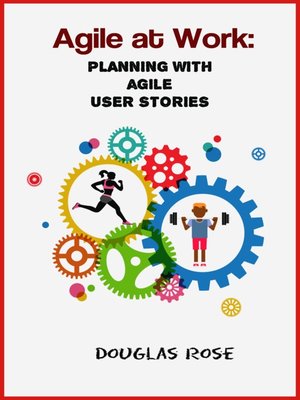
Sign up to save your library
With an OverDrive account, you can save your favorite libraries for at-a-glance information about availability. Find out more about OverDrive accounts.
Find this title in Libby, the library reading app by OverDrive.



Search for a digital library with this title
Title found at these libraries:
| Library Name | Distance |
|---|---|
| Loading... |
NB: There are Video Tutorials supporting this eBook. Links to video tutorials are there inside this eBook!
Agile refers to training of unique approaches and methodologies towards effective software development and project management. Agile methods are based on creating collaborative, cross-functional and self-organized teams or work groups. Agile tactics are designed to lead to greater team performance and advanced efficiency.
These methodologies are focused on producing better results than those expected when using conventional techniques. More importantly, training in Agile helps organizations to most speedily respond to the changing needs of their customers, reduce business risks, mitigate uncertainty often caused by varying market forces and raise business ROI by dwelling more on customer value.
Agile is becoming the preferred project management approach for fast-moving projects. At the heart of any agile project lies an agile team. In this course, the first in our website's Agile at Work series, expert Douglas Rose uses a sample project to show how to build your agile team. A team with an agile mindset is self-organized, collaborative, and accountable.
The methodologies taught in Agile courses vary to a great extent. Each methodology explains a different way of handling software development and general project management. When undergoing training in Agile, you will find that what one training course focuses on may be completely different from what another emphasizes. This is due to the different methodologies and approaches of Agile. There are mainly six Agile methodologies namely Scrum, DSDM, XP, Lean, TDD and Kanban. Agile certifications will always vary depending on the methodology one chooses to go for.
Topics include:
Agile Projects are adaptive and fast moving. To be successful with Agile, you need to follow some simple planning steps to keep the project on track. There are only a few simple practices but it is important to understand these practices and follow them correctly. We will start this course by introducing the Agile Sprints. Working in sprints is a significant departure from traditional projects. Next, we will see how to create an Agile User Story. These stories are the centrepiece of Agile planning. I will demonstrate how to estimate each story and then roll them up in to a planned sprint.
Finally, we will take these estimates and demonstrate how you calculate your team's Velocity. That way you can create a release schedule for your final product delivery. This course is the second in BefittingLife.com's Agile at Work series. Whether you are a Project Manager, a Software Developer, or a Senior Manager, this series is designed to help you get greater agility from your team. So, let us get started planning your project with Agile User Stories.







